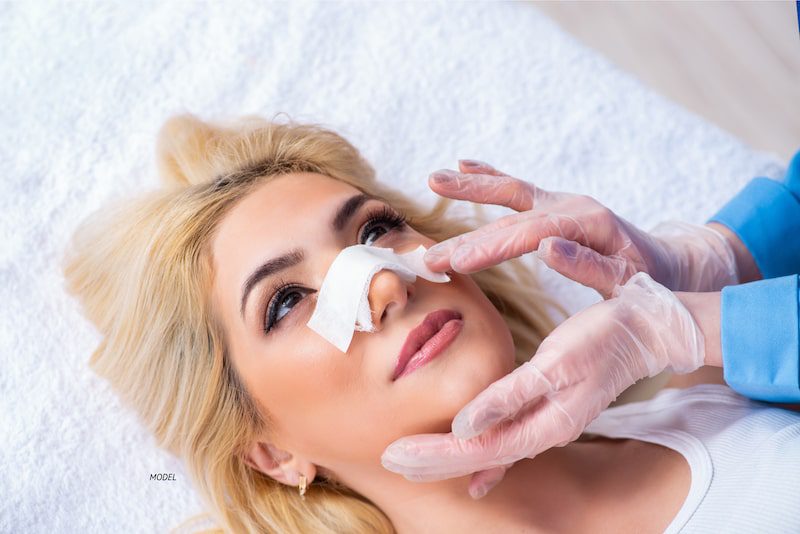Breathe Right With Rhinoplasty
Posted February 09, 2022 in Rhinoplasty
3 Minute Read:
Rhinoplasty, also known as a nose job, is a surgical procedure that modifies the shape of the nose to enhance its appearance. In some cases, the procedure can also help correct breathing problems caused by structural defects in a patient’s nose.

To be more precise, rhinoplasty is performed to:
- Improve nasal symmetry
- Improve the size of the nose in relation to the size of the face.
- Treat wide, large, or upturned nostrils
- Correct a deviated septum
Here is what you need to know about rhinoplasty.
How Can a Deviated Septum and Structural Irregularities Impact Breathing?
While a deviated septum is commonly present from birth, it can be caused by facial trauma (including a previous rhinoplasty procedure). This condition is characterized by a crooked septum (the cartilage and tissue separating the nostrils), often meaning that one nostril is larger than the other.
While this sounds like an innocent condition, having a deviated septum (or other structural irregularities) presents a host of complications, including trouble breathing properly. This is because the deviation (depending on the severity) can block one nostril, significantly reducing airflow.
In addition, nasal structural irregularities can:
- Result in trouble sleeping and heavy snoring
- Contribute to sleep apnea
- Increase nasal congestion
- Result in nosebleeds
- Contribute to headaches
- Cause sinus infections
Am I an Ideal Candidate for Rhinoplasty?
Like any other plastic surgery, rhinoplasty is a highly personalized procedure and requires a consultation to determine if you are candidate for the procedure. Typically, the ideal candidate for the procedure should:
- Understand what the procedure entails
- Have realistic expectations
- Be in a good physical and mental health status
- Have fully developed facial features
- Be a non-smoker or be willing to quit smoking
How Is Rhinoplasty Performed?
Rhinoplasty is usually performed under general anesthesia. Once the anesthesia has been administered, your plastic surgeon will make an incision across the columella (under the nose) or within the nostrils.
By removing cartilage or bone or adding cartilage grafts, your plastic surgeon can reduce or increase the size of your nose to enhance facial balance.
If you have a deviated septum, your plastic surgeon will straighten it to enable you to breath better. Once the desired nasal structure and shape have been achieved, the surgeon will close the incisions with stitches.
A splint and a bandage will cover and support the nose.
What Should I Expect for My Results?
After the procedure, you can expect swelling and bruising to persist for several weeks. As part of the healing process, it may be challenging to breath properly during the first weeks; however, this is normal and not a sign of any complication.
The initial swelling will go away after some weeks, but you might have to wait for up to a year to see the final results of the procedure.
Of course, your face will change as you age, but the results of rhinoplasty surgery should be relatively permanent.

Interested in Learning More About Rhinoplasty?
In addition to improving your facial appearance, rhinoplasty surgery can go a long way in helping you breathe more efficiently. If you are looking for a reliable plastic surgeon providing rhinoplasty surgery, contact Dr. Paul Durand at Careaga Plastic Surgery. Give us a call at (305) 960-7511 for more information about rhinoplasty.
